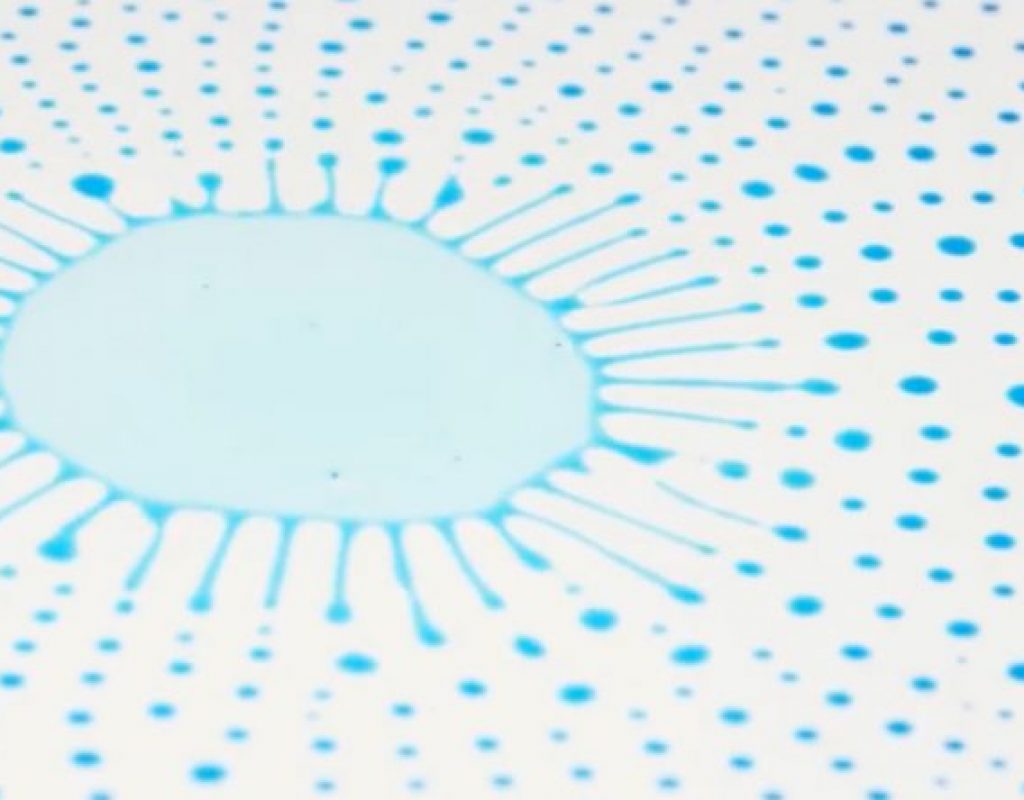Recently in the world of After Effects, there’s news on tracking, multiple plug-in releases and updates, EXR format upgrade, Illustrator tips, shape animation, classes, fluids, and more. It’s hard to know if this approach to news is still useful, but here it is!
Mocha planar tracking is now more integrated into After Effects. BorisFX has the details in Mocha AE CC in Adobe After Effects 2019 and in Quick Tip: Mocha AE 2019 Export Workflow for Adobe After Effects.
Meanwhile back at the mesh, VinhSon Nguyen offered a First Look: New Trapcode Fluid Physics in both Trapcode Particular & Trapcode Form. He says “It’s going to change the particle game inside After Effects, making particle work a lot more realistic and interesting.” Cool definitely but realism, hmm,.. Perhaps if I understood why “old vortices never die, they just fade away through viscosity,” I’d be more excited about After Effects newish data input abilities.
Check out real visualizations at the American Physical Society’s Division of Fluid Dynamics video Gallery of Fluid Motion. The New York Times edited a few together for a 2015 news piece The Best Fluid Dynamics Physics Videos of 2015; that’s below with a later visualization.
What’s new inside the massive plug-in collection Sapphire 2019 for AE and Premiere users? For answers check out Sapphire 2019: New Features for Adobe After Effects and Premiere Pro. Below, Adobe certified trainer Nick Harauz shows new features including the revamped LensFlare and Flare Designer, fun new effects and transitions, and new Mocha masking tools.
Yanobox Nodes 3 is out! This After Effects plug-in is Mac-only, almost similar to other filters but quite unique.
Another PVC news item details the upgrade to FXhome HitFilm Pro. HitFilm v11.0 introduces a new Surface Studio plug-in requested by users, and some other features, to help enhance your cinematic style titles created in HitFilm Pro. Here’s Beginners Guide to Surface Studio in HitFilm, the jack of all trades NLE/FX app:
A PVC news item notes that CyberLink has a new product. The company, known for its own apps like a complete NLE suite and a photo editor, has introduced an AI-style video plug-in for Adobe Premiere Pro and After Effects. Built-in combinations of techniques in After Effects may produce close results.
Results in an E.J. Hassenfratz election-themed poll at one point showed After Effects with only a 29% approval rating vs. 76% approval for the direction Cinema 4D is going. Almost as many people abstained from the AE poll than approve of it…
Results in my election themed poll so far…#AfterEffects with only a 29% approval rating vs. 76% approval for the direction #C4D is going. Almost as many people abstained from the AE poll than approve of it…🤔 pic.twitter.com/tZEQ2AZXDf
— E.J. Hassenfratz (@eyedesyn) November 6, 2018
Marker Remap for After Effects, also available from AEScripts.com, can retime compositions using split layer markers, which according to Ryan Summers is “almost like having motion clips from C4D within After Effects.”
Andrew Embry noted Synthesia, auto lipsync app for future dubbing.
The Anchor Point Gravity script, available from AEScripts.com, repositions the anchor point based on depth and gravity.
Motion Array says they can help you Learn how to export GIFs from After Effects with Adobe Media Encoder! Of course, others have similar advice, like School of Motion. The big mystery is to use Adobe Media Encoder.
Brendan Bolles released ProEXR 2.0, which brings Cryptomatte support to AE and addresses issues Chris Zwar had mentioned back in August. You can read about speed improvements and so forth on the fnord blog. Chris Zwar explained his recent experiences in a PVC article and on the AE-List:
What was happening (ever since AE CS6 and before!) is that when you had an EXR sequence and AE was running EXtractoR or something, AE would read the EXR header many, many times—once for each channel, in each instance of EXtractoR. When you add in Cryptomatte the EXR header gets much bigger, multiplying the problem. The result was that these EXR sequences could be unbearably slow. For some reason AE didn’t do this when you just had a single frame.
The latest release of AE is still doing this, I believe, but this version of the OpenEXR plug-in always caches channels and also headers. This makes things much better, as I think Chris will attest. Now, Cryptomatte is still not the fastest thing. After all, it usually processes 12 EXR channels in one pass. Some proxy creating might be wise.
Helge Maus of pixeltrain has a tutorial on the Fnord tool.
Mike Dopsa demoed Dell hardware acceleration of Mettle Flux at a recent conference. Mettle had an update for Flux in October.
Ukramedia has a new short course on How to Animate Logos & Icons in After Effects.
Jake Bartlett‘s advice is recommended by E.J. Hassenfratz, including a new tutorial on Illustrator Tips for Motion Designers. Jake Bartlett also has a course on Skillshare, Animating With Ease in After Effects V2.
In his Motion Design course at Learned Squared, Jr. Canest (Jorge R. Canedo) deals with Complex Shapes Animation. It’s an excerpt of a much larger sequence of tutorials.
Halloween is just once a year, thank God, but some tricks can be repurposed.
Finally, more fluids!
Please note that these roundups are for quick review and comparison. There is almost always vital information from the originating authors at the links provided — and often free presets, projects, or stock footage too.
@aerich




